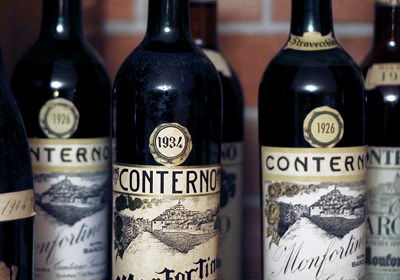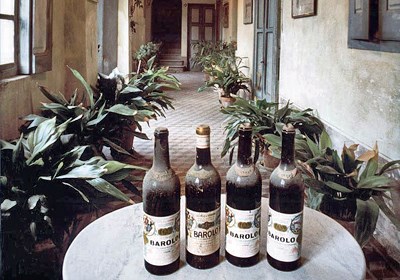
Which site would you like to visit?
By clicking the retail or wholesale site button and/or using rarewineco.com you are choosing to accept our use of cookies to provide you the best possible web experience.
Before the late 1950s, the accepted doctrine was that great Barolo could only be made by blending crus and villages, capturing the different qualities of each site.
The idea of a single-cru Barolo was as yet unexplored.
Yet, even in that period, there was more than one way to blend. Big producers vinified the fruit from specific vineyards or villages separately and then later blended them in varying proportions to produce a balanced Barolo.
But fine small growers believed that the best way to integrate the fruit from different places was to bring it together before fermentation. This was called assemblaggio and was based on the belief that only co-fermentation could achieve a complete marriage of the different characters.
Today, this highly artisanal approach has almost completely disappeared. But a new grower has emerged, embracing assemblaggio, and the world is taking note.
The estate is Alan Manley’s Margherita Otto, and its utterly traditional and singularly harmonious character makes it a must for anyone who loves Old School Barolo.
Alan’s name will be familiar to many who have traveled to the Langhe. For over a decade, he worked for some of the region’s most esteemed producers, hosting foreign visitors and absorbing every scrap of wisdom he could in the vineyards and cellars.
All the while, Alan carefully searched for fine Nebbiolo parcels from which to make his own wine, and his debut 2015 Barolo came from three beautifully exposed, tiny plots with vines up to 75 years of age.
The largest plot is an east-facing half hectare bordering the high-altitude, clay-heavy Ginestra cru in Monforte d’Alba. Alan’s other estate holding is a very steep, southeast-exposed .25-hectare parcel of sandy soil in Castiglione Falletto’s fine Pernanno vineyard.
Alan augments these sites with fruit purchased from a grower friend with a quarter-hectare plot bordering the celebrated Vigna Rionda MGA in Serralunga d’Alba. And, in 2018 and 2020, he added additional parcels in Barolo’s Vignane and Coste di Rose crus. These two brought further nuance to his already compelling Barolo and allowed him to add a small production of Langhe Nebbiolo to his line-up.
In addition, Alan produces a small amount of prized Chinato with his own Barolo as the base wine.
The 2015 Margherita Otto Barolo marked the realization of Alan’s vision of making his own Barolo, developed over a lifetime of wine appreciation. The first-generation American son of Swiss parents who enjoyed wine daily, he began sampling from his father’s glass at an early age.
Alan has been a serious student of Barolo for over a quarter of a century. His passion for wine was stoked when he started Colorado Springs’ acclaimed Primitivo Wine Bar in 1997. But it was only after working a few Barolo harvests that he had the idea of making his own Barolo. He ultimately pulled up stakes and moved to the Langhe in the late 2000s, where he could realize his dream of becoming a Barolista.
Having absorbed the teachings of several generations of Barolo traditionalists, Alan has shown himself, since his very first vintage, to be a superb grower and winemaker of the Old School.
Rather than hedging the vegetation, Alan employs the ancient, labor intensive ar caplé method of weaving the long shoots into a cap that protects the bunches from sunburn and hail. The fruit is allowed to hang until fully ripe, with each vineyard harvested only when it is ready.
Alan ferments his Barolo fruit in a single tank, adding each vineyard as it is harvested in a continuous ferment. That is followed by approximately five weeks of maceration using the ultra-traditional cappello sommerso. The wine is then racked into a single Slovenian oak botte and several demijohns. It spends 3+ years in that barrel before bottling.
Named in honor of Alan’s grandmother and grandfather, the Margherita Otto Barolo seamlessly integrates the perfumed rose-petal richness of Castiglione; the power and complexity of Monforte, and the structured elegance of Serralunga. It is surely one of the most exciting new Barolos in a generation, a true classic that expresses its terroirs and growing season with stunning purity and rare harmony.





New discoveries, rare bottles of extraordinary provenance, limited time offers delivered to your inbox weekly. Be the first to know.
Please Wait
Adding to Cart.
...Loading...


By clicking the retail or wholesale site button and/or using rarewineco.com you are choosing to accept our use of cookies to provide you the best possible web experience.

